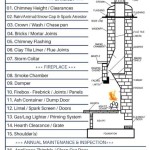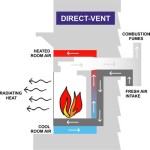Understanding Wood Burning Fireplace Stoves
Wood burning fireplace stoves represent a time-honored method of providing supplemental heat and ambiance to living spaces. They offer an alternative or complement to central heating systems, particularly appealing during colder months. These appliances burn wood as fuel, converting its stored energy into heat through combustion. The heat is then radiated and convected into the surrounding environment, warming the room. Understanding the nuances of wood burning fireplace stoves, from their operational principles to their environmental impact, is crucial for informed decision-making regarding their purchase, installation, and use.
The fundamental design of a wood burning fireplace stove typically encompasses a firebox where the wood is burned, an air intake system to regulate combustion, a flue to exhaust smoke and gases, and a door to control airflow and access the firebox. Modern stoves often incorporate advanced features such as catalytic combustors or secondary combustion systems to improve efficiency and reduce emissions. Materials commonly used in stove construction include cast iron, steel, and soapstone, each offering different thermal properties and aesthetic qualities. Choosing the appropriate material and design depends on individual heating needs, aesthetic preferences, and budgetary considerations.
Key Considerations Before Purchasing a Wood Burning Fireplace Stove
Before investing in a wood burning fireplace stove, several critical factors must be thoroughly evaluated. These encompass the stove’s heating capacity, the size and layout of the space to be heated, local regulations regarding wood burning appliances, and the availability of a safe and compliant chimney system. Neglecting these aspects can lead to inefficient heating, safety hazards, and potential legal repercussions.
Heating capacity is typically measured in British Thermal Units (BTUs) per hour. A stove with a BTU rating that is too low for the space will struggle to maintain a comfortable temperature, while a stove with an excessively high BTU rating can overheat the room, leading to discomfort and energy waste. Consult with a qualified hearth professional to determine the appropriate BTU rating based on the square footage of the area to be heated, the insulation levels of the building, and the climate. Consider factors such as ceiling height and window area, as these influence heat loss.
Local regulations governing wood burning appliances can vary significantly. Some jurisdictions may restrict the installation or use of non-EPA certified stoves, while others may impose limitations on the types of fuel that can be burned. Familiarize yourself with local building codes and air quality regulations before making a purchase. Failure to comply with these regulations can result in fines or the forced removal of the stove.
A properly functioning chimney is essential for the safe and efficient operation of a wood burning fireplace stove. The chimney must be appropriately sized for the stove and free from obstructions or damage. Regular inspections and cleaning by a certified chimney sweep are necessary to prevent chimney fires and ensure proper draft. If an existing chimney is not compatible with the new stove, modifications or replacement may be required, adding to the overall cost of installation.
Understanding the Operation of a Wood Burning Fireplace Stove
Operating a wood burning fireplace stove effectively involves understanding the principles of combustion, proper wood selection, and safe lighting and maintenance practices. Inefficient operation not only reduces heating efficiency but also increases the risk of creosote buildup, which can lead to chimney fires.
Combustion is a chemical process that requires fuel, oxygen, and heat. The efficiency of combustion in a wood burning stove is influenced by factors such as air supply, wood moisture content, and firebox temperature. Insufficient air supply can result in incomplete combustion, producing smoke and creosote. Excessive air supply can cool the firebox, reducing efficiency and potentially leading to overheating of the stove components. Modern stoves often incorporate adjustable air controls to optimize combustion based on the type and quantity of wood being burned.
The type and moisture content of the wood used as fuel significantly impact the stove's performance. Seasoned hardwood, such as oak, maple, and birch, burns hotter and cleaner than softwood or green wood. Seasoning involves drying the wood for a period of six to twelve months to reduce its moisture content below 20%. Burning wet wood creates more smoke and creosote, reducing heating efficiency and increasing the risk of chimney fires. Store wood in a dry, well-ventilated location to facilitate proper seasoning.
Safe lighting and maintenance practices are fundamental to the long-term operation of a wood burning fireplace stove. Always follow the manufacturer's instructions for lighting the fire. Use appropriate kindling and avoid using flammable liquids such as gasoline or kerosene. Regularly remove ashes from the firebox to maintain proper airflow. Inspect the stove and chimney periodically for signs of damage or deterioration. Schedule professional chimney sweeps at least once a year, or more frequently if heavy use is anticipated.
Environmental Considerations and Responsible Wood Burning
Wood burning, while often perceived as a natural heating alternative, can contribute to air pollution if not managed responsibly. Particulate matter, carbon monoxide, and other harmful emissions are released during the combustion process. However, advancements in stove technology and responsible burning practices can significantly mitigate these environmental impacts.
EPA-certified stoves are designed to burn wood more efficiently and produce fewer emissions than older, non-certified models. These stoves incorporate features such as catalytic combustors or secondary combustion systems to reduce particulate matter emissions. When purchasing a new stove, prioritize models that meet or exceed EPA emissions standards. These standards are regularly updated to reflect advancements in technology and address evolving environmental concerns.
Burning dry, seasoned wood is crucial for minimizing emissions and maximizing heating efficiency. Wet or unseasoned wood produces significantly more smoke and particulate matter than dry wood. Allow wood to season for at least six months, and ideally longer, before burning. Proper storage in a dry, well-ventilated location is essential for effective seasoning.
Employing proper burning techniques can also reduce emissions. Avoid smoldering fires, as these produce excessive smoke and creosote. Maintain a hot, actively burning fire with sufficient air supply. Monitor the chimney for excessive smoke. If the chimney is producing visible smoke, adjust the air controls to increase airflow and improve combustion efficiency. Consider using a top-down burning method, which involves placing kindling and smaller pieces of wood on top of larger logs. This method can promote cleaner burning and reduce startup emissions.
Adopting sustainable wood sourcing practices further minimizes the environmental impact of wood burning. Obtain wood from responsibly managed forests or utilize sustainably harvested wood. Consider using wood pellets, which are made from compressed sawdust and wood chips, as an alternative fuel source. Wood pellets typically have a lower moisture content and produce fewer emissions than cordwood.
Ultimately, responsible wood burning involves a combination of efficient stove technology, proper fuel selection, safe operational practices, and a commitment to minimizing environmental impact. By adhering to these principles, wood burning fireplace stoves can continue to provide a sustainable and enjoyable source of heat.

Freestanding Wood Burning Stoves Sierra Hearth And Home

Wood Stoves Vs Fireplaces Burning Hearth S

Wood Burning Stoves In Milton Keynes Inspirations

Wood Burning S Hearthstone Stoves Vermont

Fireplace Vs Stoves Pros Cons Dc Service

How To Heat Your House With Just A Wood Burning Stove Chesneys

Buy Wood Burning Indoor Fireplace Sol008l 4 5kw Solwet

Horseflame Alpha Wood Burning Stove Size 5 Kilowatt

Stoves Wood Gas Pellet Lopi

Wood Burning Stove We Love Fire
Related Posts








